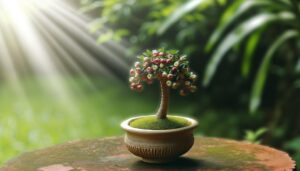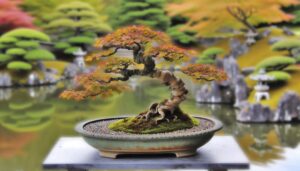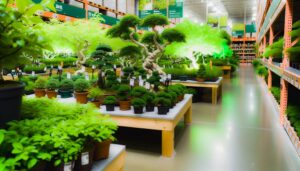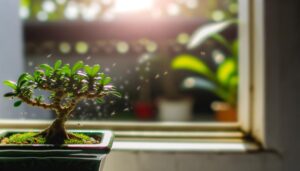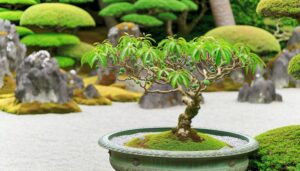Do Bonsai Tree Kits Work?
Bonsai tree kits are highly effective for both novices and experts in the art of bonsai cultivation. Each kit typically includes pruning shears, wire, specialized soil, a ceramic pot, and either seeds or a sapling, offering the essential tools to shape and nurture miniature trees.
The selection of tree species, quality of the included tools, and beginner-friendly instructions greatly enhance the chances of success. However, maintaining proper light, temperature, and moisture levels are critical to thriving bonsais.
Adherence to specific care guidelines and an understanding of the growing conditions are paramount. Discover detailed techniques and expert recommendations for best results.
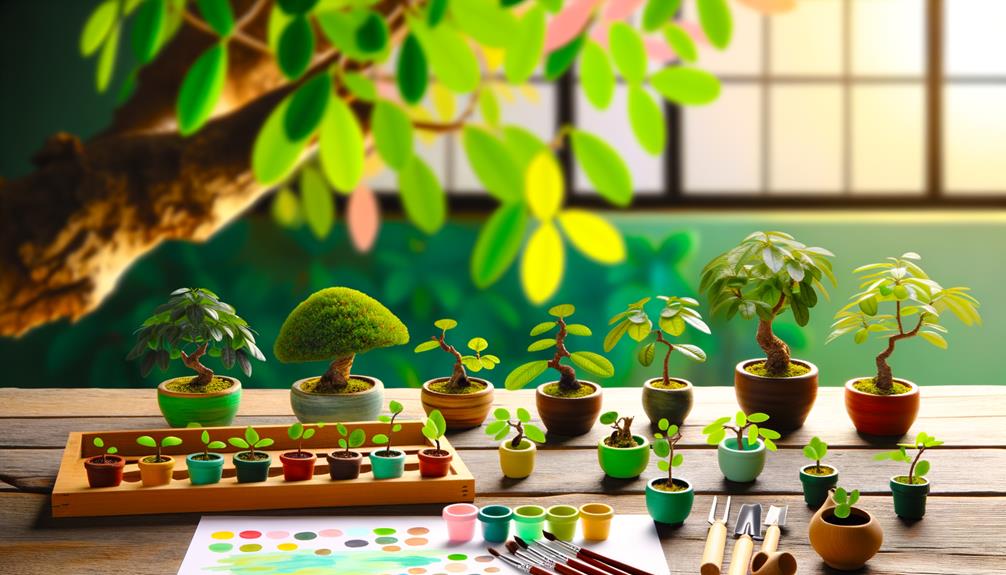
Key Takeaways
- Bonsai tree kits provide all essential components, including tools, soil, and pot, ensuring a comprehensive start.
- Detailed guides and visuals in beginner-friendly kits simplify the process for novices.
- Quality tools and species-specific supplies in kits enhance the chances of successful growth.
- Proper care, including watering cycles and light management, is crucial for bonsai tree kit success.
- Expert recommendations emphasize selecting species suited to local climate and environment.
What's in a Bonsai Tree Kit
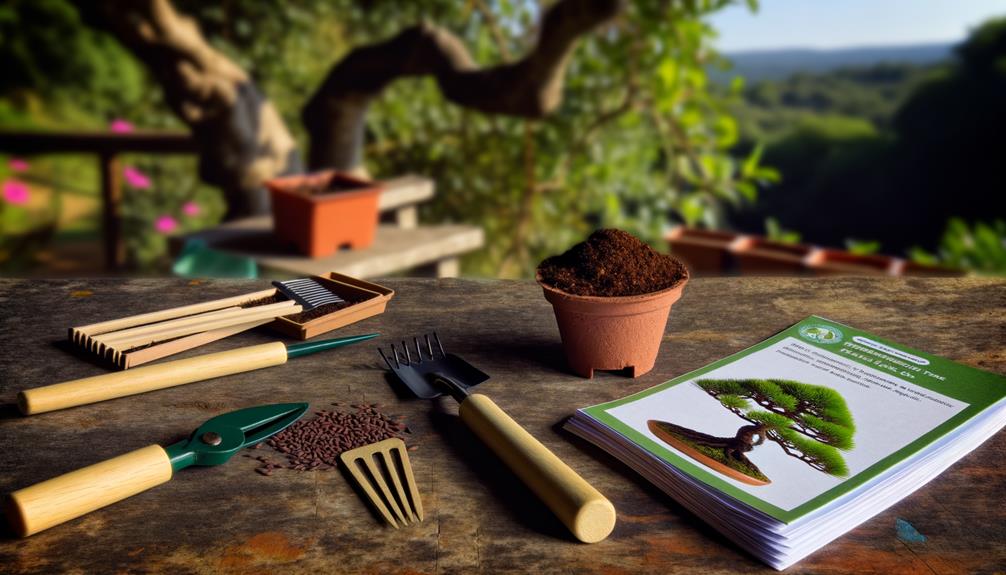
A complete bonsai tree kit typically includes a selection of essential tools and materials. This often consists of pruning shears, wire, soil, a pot, and often a young sapling or seeds to begin the cultivation process.
Pruning shears are designed to make precise cuts that shape the tree and promote healthy growth. Wire, usually made from aluminum or copper, is utilized to train branches into the desired configuration. The specialized bonsai soil is formulated to guarantee proper drainage and nutrient retention, vital for the tree's health.
The pot, often crafted from ceramic, provides the aesthetic and structural foundation for the bonsai. These components collectively facilitate the intricate art of bonsai cultivation, offering both beginners and seasoned enthusiasts the tools necessary for successful growth.
Choosing the Right Kit
Choosing the appropriate bonsai tree kit requires a careful evaluation of factors like the type of tree, the quality of included tools and materials, and the skill level of the cultivator.
The selection of tree species is paramount; some species, like Juniper and Ficus, are more forgiving for beginners, while others may require advanced horticultural knowledge.
Evaluating the quality of tools—such as pruning shears, wire, and pots—is essential, as high-quality materials enhance the overall cultivation experience and success rate.
Additionally, kits designed for beginners typically include step-by-step guides and basic tools, whereas advanced kits may feature specialized instruments and rare tree species.
Understanding these elements ensures that the chosen kit aligns with the user's expertise and expectations.
Ease of Use

The ease of use of bonsai tree kits is a critical factor that greatly influences the user's overall experience and success.
A simple setup process guarantees that even those with no prior horticultural expertise can effectively start their bonsai cultivation journey.
Additionally, beginner-friendly instructions, which are clear and carefully detailed, play an essential role in guiding novice users through each stage of the bonsai growing process.
Simple Setup Process
Setting up a bonsai tree kit is a straightforward process that involves a few key steps designed to guarantee ease of use for both novices and experienced gardeners. The kits typically include essential components such as seeds or saplings, soil, and a pot.
The process begins with selecting the appropriate pot and filling it with the provided soil, ensuring proper drainage. Following this, the seeds or saplings are carefully planted and watered according to the specific species' requirements.
- *Soil Preparation*: Confirm the soil mix is suitable for bonsai cultivation, promoting adequate aeration and moisture retention.
- *Planting*: Position seeds or saplings at the correct depth to encourage ideal growth.
- *Watering*: Maintain consistent moisture levels, neither over-watering nor allowing the soil to dry out completely.
These steps facilitate a successful bonsai growing experience.
Beginner-Friendly Instructions
For newcomers to bonsai cultivation, detailed step-by-step instructions are vital for ensuring a smooth and successful initiation into this intricate art form. Beginner-friendly bonsai tree kits typically include detailed guides that cover fundamental aspects such as seed stratification, soil composition, watering schedules, and pruning techniques.
These manuals often provide visual aids and precise measurements to help novices understand the delicate balance required for bonsai health and aesthetics. By demystifying complex horticultural practices, these instructions enable beginners to develop confidence and skill incrementally.
Additionally, troubleshooting sections address common pitfalls, offering corrective measures to prevent early-stage failures. Overall, these well-structured guides are essential for turning an initial curiosity into a sustained, rewarding bonsai hobby.
Growing Conditions
When cultivating bonsai trees, it is crucial to understand their specific light and temperature requirements, which vary greatly across species.
Additionally, the composition of the soil and the regimen for watering are critical factors that directly influence the tree's health and growth.
Properly managing these growing conditions guarantees the successful development and longevity of your bonsai.
Light and Temperature Requirements
Proper light and temperature conditions are crucial for the healthy growth and development of bonsai trees, as these factors heavily influence their photosynthesis and overall health. Ensuring ideal light involves providing at least six hours of direct sunlight daily for most species. However, the specific light requirements can vary depending on whether the bonsai is an indoor or outdoor variety.
Temperature control is equally important, with tropical species needing a stable, warm environment, while temperate species require seasonal variation. Extreme temperatures can lead to stress and impair growth.
Key factors include:
- Light Intensity: Guarantee sufficient and appropriate light levels based on species.
- Temperature Range: Maintain suitable temperature ranges tailored to the bonsai's natural habitat.
- Seasonal Adjustments: Adjust light and temperature conditions to mimic natural seasonal changes.
Soil and Water Needs
In addition to light and temperature, the soil composition and water regimen are fundamental aspects of cultivating robust bonsai trees.
Ideal soil must balance drainage and moisture retention, typically achieved with a mix of akadama, pumice, and lava rock. This blend ensures root aeration while preventing water stagnation.
Watering practices are equally critical; bonsai trees require consistent moisture without being waterlogged. The frequency of watering depends on species, pot size, and environmental conditions. Over-watering can lead to root rot, whereas under-watering causes dehydration and stress.
Utilizing a well-draining soil and sticking to an appropriate watering schedule are essential for maintaining the health and vigor of bonsai trees, particularly when grown from kits.
Common Challenges
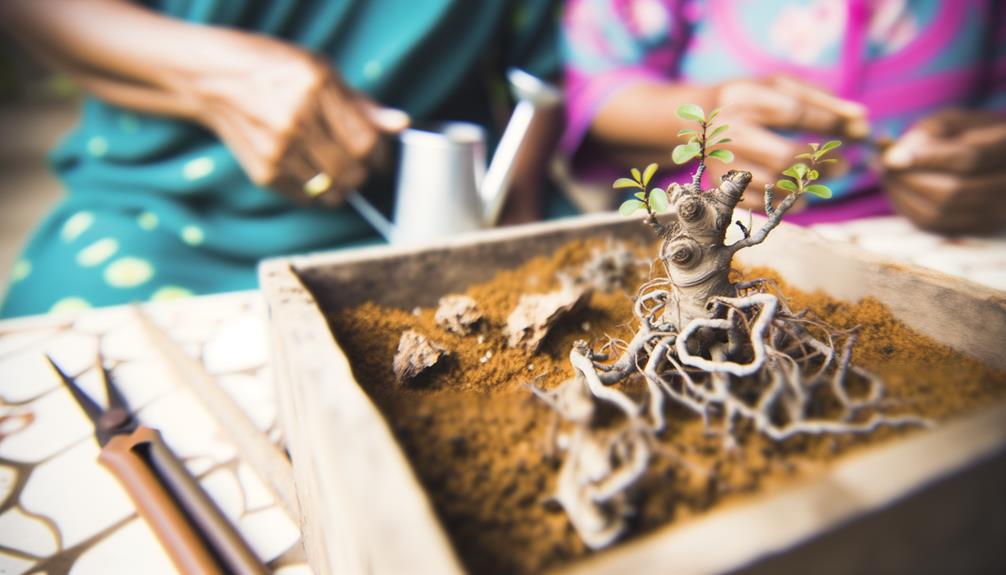
Cultivating bonsai trees from kits often presents several challenges, including maintaining ideal moisture levels, ensuring proper light exposure, and preventing pest infestations. These factors demand meticulous attention and a nuanced understanding of horticultural principles to successfully nurture bonsai trees.
- Moisture Control: Bonsai trees require precise watering schedules, as both overwatering and underwatering can be detrimental. Regular monitoring of soil moisture is essential.
- Light Requirements: Different species have varying light needs, which must be catered to by providing adequate natural or artificial light, ensuring best photosynthesis and growth.
- Pest Management: Bonsai trees are susceptible to pests such as aphids and spider mites. Implementing preventative measures and timely interventions is critical to maintaining tree health.
These challenges necessitate a disciplined approach for successful bonsai cultivation.
Success Stories
Transforming a bonsai tree kit into a thriving miniature masterpiece requires not only dedication but also an in-depth understanding of botanical intricacies, as evidenced by numerous success stories from seasoned horticulturists.
For instance, Dr. Emily Tanaka's meticulous care of her Japanese Maple bonsai demonstrates the level of precision required in pruning techniques and root training.
Similarly, John Whitaker's success with a Chinese Elm bonsai highlights the importance of understanding specific watering cycles and soil composition.
These individuals have shown that with proper knowledge of species-specific needs, fertilization schedules, and environmental control, a bonsai tree kit can yield remarkable results.
Their achievements underscore the potential for both aesthetic beauty and botanical health when approached with scientific rigor.
Expert Recommendations
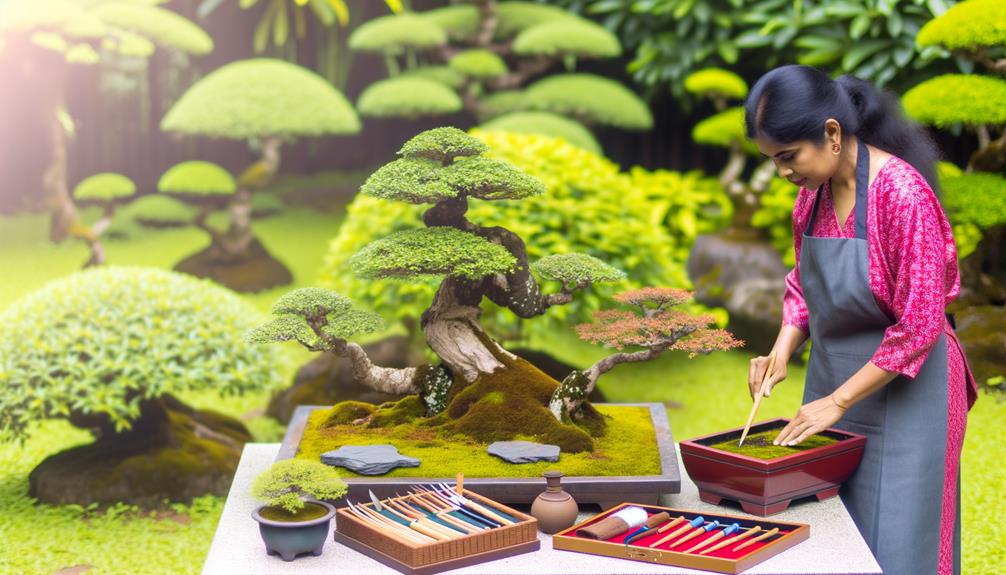
Renowned horticulturists suggest prioritizing species selection based on regional climate suitability as the fundamental step in ensuring the successful cultivation of bonsai trees from kits. Choosing a species well-suited to your local environment greatly enhances growth potential and reduces the risk of disease and pest infestations. Experts also stress the importance of proper soil composition and watering techniques to mirror natural conditions.
- Species Compatibility: Opt for species like Ficus for tropical climates or Juniper for temperate zones.
- Soil Quality: Utilize a well-draining bonsai soil mix to prevent root rot and promote healthy growth.
- Watering Practices: Follow consistent but moderate watering schedules to maintain ideal soil moisture levels.
Following these expert recommendations increases the chances of nurturing a flourishing bonsai tree from a kit.
Conclusion
Bonsai tree kits provide a thorough introduction to the ancient art of bonsai cultivation, covering essential tools, seeds, and instructions.
By selecting an appropriate kit, adhering to specified growing conditions, and addressing common challenges, individuals can successfully cultivate bonsai trees.
Despite concerns regarding the complexity of bonsai care, numerous success stories and expert recommendations affirm the kits' efficacy.
Consequently, bonsai tree kits are validated as effective means for both novices and enthusiasts to engage in bonsai cultivation.

